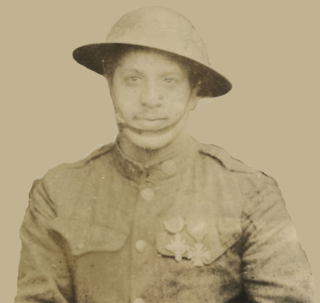 W
WCorporal Clarence Van Allen was a war hero from the 372nd Infantry Regiment an all Black unit that fought with honours in World War I. For his bravery under fire he won the Médaille militaire one of a few Americans to do so.
 W
WAlbert Edward Baesel was an American Army officer who posthumously received the Medal of Honor for actions near Ivoiry, France which led to his death during World War I.
 W
WPearce Bailey (1865–1922) was an American neurologist and psychiatrist, educated at Princeton and Columbia Universities. He became a consultant in several New York hospitals and with Collins and Frankel founded the Neurological Institute. He was also appointed an associate professor of neurology in Columbia. On the entry of the United States into World War I, he was appointed chief of the division of neurology and psychiatry in the United States army with the rank of colonel. He perfected a system for weeding out "mental defectives" which is said to have been used as a model by the Allies. His major literary efforts comprised a translation of Golobievski's Atlas and Epitome of Diseases Caused by Accident (1900) and a monograph Accident and Injury; Relation to the Nervous System (1906), which was later expanded into Diseases of the Nervous System Resulting from Accident and Injury, a valuable work for the medical world. At the time of his death, Bailey was chairman of the New York State Committee for Mental Defectives.
 W
WFrank J. Bart was a Medal of Honor recipient for World War I.
 W
WJohn Loomis Chamberlain was an American army officer, born in New York.
 W
WBertram Tracy Clayton was an American soldier and politician.
 W
WEdgar Thomas Conley was an officer in the United States Army who served as Adjutant General from 1935 to 1938.
 W
WHerman Davis was a decorated American sniper of World War I. He was a United States Infantry Private Company I, 113th Infantry Regiment, 29th division.
 W
WHarold Ernest Goettler was a U.S. Army Air Service aviator killed in action on October 6, 1918 while locating the Lost Battalion of the 77th Division during World War I. He died of wounds resulting from German fire from the ground during the flight. For his actions, he posthumously received the Medal of Honor. He attended the University of Chicago, and the Harold E. Goettler Political Institutions Prize awarded to University of Chicago undergraduates is named in his honor.
 W
WLieutenant Murray Kenneth Guthrie was a World War I flying ace credited with six aerial victories.
 W
WPeter Charles Harris was an officer in the United States Army who served as Adjutant General of the U.S. Army from 1918 to 1922.
 W
WIra Allen Haynes was a United States Army officer in the late 19th and early 20th centuries. He served in World War I.
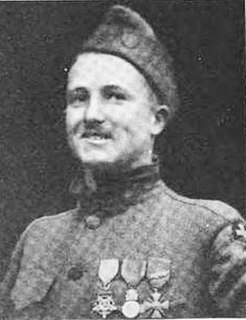 W
WRalyn M. Hill was a soldier in the United States Army who received the Medal of Honor for his actions during World War I.
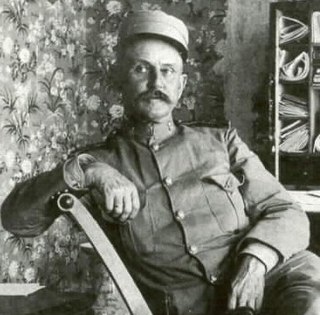 W
WCharles F. Humphrey (Jr.) was a career United States Army officer who served for over 40 years during the first half of the 20th century, retiring as a Brigadier General in 1940 one year before the entry of the United States of America into World War II.
 W
WMilo Lemert was a soldier in the United States Army who received the Medal of Honor for his actions during World War I.
 W
WDale Mabry was an American World War I aviator.
 W
WGeorge H. Mallon was an officer in the United States Army who received the Medal of Honor for his actions during World War I.
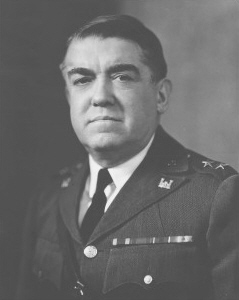 W
WEdward Markham was a United States Army officer who served in France during World War I and was later Chief of Engineers from 1933 to 1937.
 W
WJames I. Mestrovitch was an American sergeant who received the Medal of Honor, United States highest military decoration, for his actions in World War I.
 W
WGeorge Horace Morgan was an American cavalry officer and Medal of Honor recipient. He was the son of a Civil War general, George N. Morgan, and graduated from West Point, the U.S. Military Academy, in 1880. He was post commander of Fort Myer, Virginia, when he held the rank of major, March–June 1899.
 W
WColonel Wilbur J. Peterkin was a Lieutenant Colonel in the United States Army during the Second World War in the China Burma India Theater, and an executive and commanding officer of the United States Army Observer Group, commonly known as the Dixie Mission. Prior to the war, Peterkin was a high school teacher in Sumner, Washington. Before commanding Dixie, Peterkin had spent almost two years in China.
 W
WThomas A. Pope was a soldier in the United States Army who received the Medal of Honor for his actions at the Battle of Hamel, in France during World War I. Pope's unit was attached to an Australian Army battalion during the battle and, following a recommendation from an Australian officer, Pope was also awarded the Distinguished Conduct Medal, by King George V.
 W
WPatrick J. Regan was an officer in the United States Army who received the Medal of Honor for his actions during World War I.
 W
WMarcus William Robertson was a United States Army soldier and a recipient of America's highest military decoration—the Medal of Honor—for his actions on the Philippine-American War.
 W
WGeorge Henry Shelton was an American Brigadier General during World War I.
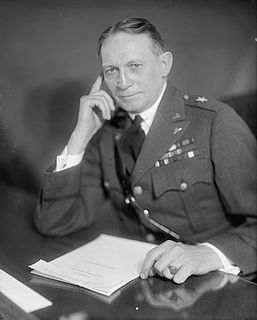 W
WGeorge Sherwin Simonds was a U.S. Army officer with the rank of Major General.
 W
WCaptain Alexander Rives Skinker was a Medal of Honor recipient during World War I. He graduated from Washington University in St. Louis in 1905. He served in the Missouri National Guard from 1903 to 1908, and entered the Army as a commissioned officer in 1916. He was awarded the medal for leading an attack on German pillboxes in the Hindenburg Line during the Battle of the Argonne. Skinker was killed in the attack.
 W
WEdward R. Talley was a United States Army Soldier who received the Medal of Honor for his actions near Ponchaux, France during World War I.
 W
WLieutenant Edgar Gardner Tobin was a World War I flying ace credited with six aerial victories.
 W
WReidar Waaler was a soldier in the United States Army who received the Medal of Honor for his actions during World War I.
 W
WCalvin John Ward, was a soldier in the United States Army National Guard who was awarded the Medal of Honor for his actions during World War I.